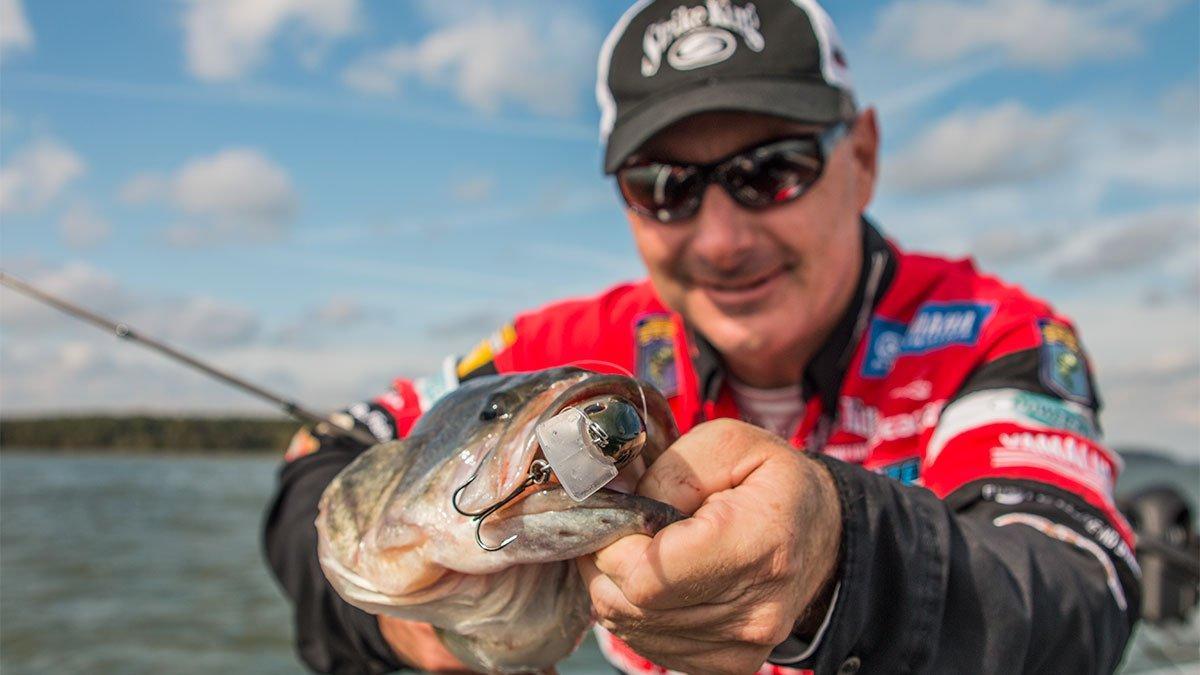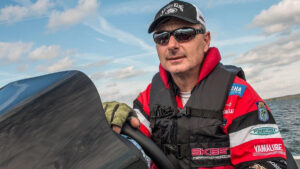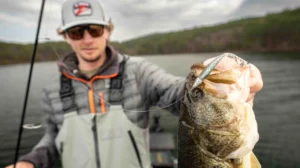As Forrest Gump would say, squarebills and fall bass fishing go together like peas and carrots; it’s no big secret. This time of year, however, crankbait anglers often find themselves in a bit of a predicament—they’ll catch a bunch of bass, but it’s difficult to get away from those pesky and ultra-aggressive 12-inchers.
Elite Series pro Mark Menendez has found an effective technique to combat this common problem and drastically increase the size of his catch. When the bass are feeding on large concentrations of shallow-water shad, super-sizing your squarebills is an excellent way to appeal to the lazy—and efficient—feeding behavior of big bass.
Big bass are lazy
When you’re hungry, would you rather run across the street for a small bag of trail mix or grill a nice, fat ribeye on the back porch? The answer is a total no-brainer for most of us and interestingly enough, fall bass share a very similar thought process to that of a human’s.
“We’re closing in on the end of the growing season for baitfish,” Menendez said. “They’re just about as big as they’re going to get and the bass know a cold winter is on its way. They need to pack on the pounds and instead of them exerting a bunch of energy to consume 25 small threadfin shad per day, they can eat a couple of large gizzard shad—and even bluegill—and feed much more efficiently.”
In addition to the efficiency factor, Menendez believes large squarebills such as the Strike King KVD 8.0 Magnum Squarebill prey on the relative unfamiliarity of the bass. They rarely encounter such large, shallow-water offerings which makes them especially vulnerable when they’re packing on pounds for the upcoming winter.
“When many anglers think about a ‘big’ squarebill, they imagine a 2.5-sized crankbait,” Menendez said. “But the 8.0 is in an entirely different league. At 4 1/2 inches and 3/4-ounce, this lure is definitely an oddball concept to bass. You’re not going to catch as many fish with it, but your chances of catching those 4 to 7-pounders will drastically increase. Big profiles appeal to the biggest and laziest bass in a particular area.”
Threadfin come and go, but gizzards are constant
In much of the country, threadfin shad get all of the attention throughout the fall months; they make their annual migration to the backs creeks and of course, thousands of bass are right behind them. If you’re too focused on the threadfin, however, you might totally miss out on another very important fall forage species.
“Gizzard shad are much larger than traditional threadfin shad and are largely ignored right now,” Menendez said. “They can commonly grow to 10 inches or more and they also inhabit the shallows in the fall months. You’ll see an entire threadfin migration come and go, but these gizzards are heartier and will stay shallow for much longer. They’ll hang back in the shallows feeding on the moss that grows on hard cover such as stumps and rocks, and the big bass know they’re easy and worthwhile targets.”
When the fall feed begins to die down, the metabolism of bass slows in dramatic fashion. Their bodies slow down, making it unnecessary to feed on a consistent basis. This makes the efficiency factor even more important, which is when mammoth squarebill crankbaits can play a big role in fooling lethargic bass.
“Once the water temperatures reach the 40-degree range in the very late stages of fall, it can be quite difficult to get bites,” Menendez said. “Again, the bass are behaving like humans; they just finished a Thanksgiving feast and they’re kicked back in their proverbial recliners watching football. When they decide to feed again in these colder temperatures, they’re looking for the most bang for their buck and that often comes in the form of a big gizzard shad.”
A solid strategy
Most anglers aren’t able to be on the water as much as they’d prefer due to work, family and financial obligations. This can make it tough to stay “on the fish” and identify the predominate pattern on a given day. In order to enjoy consistent success with these large squarebills, Menendez offers a strategy that will work on most lakes across the country.
“Whether you haven’t been on the water in a few weeks or you’re fishing a new lake for the first time, it’s good practice to find the largest creek in a lake and begin fishing from the mouth-in,” Menendez said. “Both the bait and bass will follow the creek channels during their migrations, so that’s where we’ll focus our efforts.”
Menendez will begin his dissection as the creek channel mouth with a deep-diving crankbait, such as a Strike King 10XD and 8XD in the 18 to 25-foot range, a 6XD and 5XD in the 10 to 16-foot range and finally—the big guns come out. When he reaches the end of the creek channel, the 8.0 comes into play in a substantial way.
“When we reach the point where the creek channel dead ends into a flat and the edge of the channel is sitting in 4 to 6 feet of water, that’s when these huge squarebills are deadly,” Menendez said. “We’re fishing the end of the creek channel where is meets the flat because this is a major congregation point for big bass. They can periodically feed on the flat by picking off a few big gizzards and slide back out to the perceived safety of the creek channel. It’s an ideal situation for them.”
Equipment and retrieve considerations
If you try to use traditional cranking equipment when utilizing these big squarebills, there’s a good chance you’ll snap your favorite rod in half. To avoid equipment failure, it’s imperative to undertstand the nuances of this technique.
Beef up your gear
“Your normal cranking rod will not handle this lure,” Menendez said. “I use a 7-foot, 6-inch Lew’s Custom Speed Stick Bass Magnum 3, which is essentially a flipping stick with a lighter tip. That rod needs to load up well on the back cast because you’re going to be making lob casts, similar to fishing an Alabama rig.”
In regards to line selection, Menendez doesn’t skimp. He’s found that 20-pound fluorocarbon, such as Seaguar InvizX handles the increased stress and resistance excellently. For his reel, he opts for a 6.8:1 ratio.
“A 6.8:1 Lew’s Team Lite seems to really decrease the amount of wear and tear on my body,” Menendez said. “I’ve experimented with several gear ratios and this particular one works excellently for these big plugs.”
Maintain bottom contact
While specialized equipment is needed, your retrieve speed and cadence will be fairly straightforward. Because super-sized squarebills displace so much water, all that’s often needed to elicit a reaction strike is a steady retrieve.
“This lure dives to 8 feet, so I tend to use a moderate retrieve more so than a stop-and-go,” Menendez said. “I keep it moving and make sure I’m making bottom contact with it. The deflection is what creates the bite—it has to do something different.”
Color selection
Menendez doesn’t get too picky when it comes to his color selection. He relies on four primary colors.
“In muddy water, I use chartreuse/black back, in shad situations I choose either Sexy Shad or Chartreuse Sexy Shad and in the very early spring I’ll start incorporating bluegill colors.”
When you’re struggling to weed through the pesky 12-inchers of the fall season, make an effort to increase your lure’s profile. Again, you may not get as many bites with these super-sized squarebills, but the bass you catch will be worthy of a nice photo.














